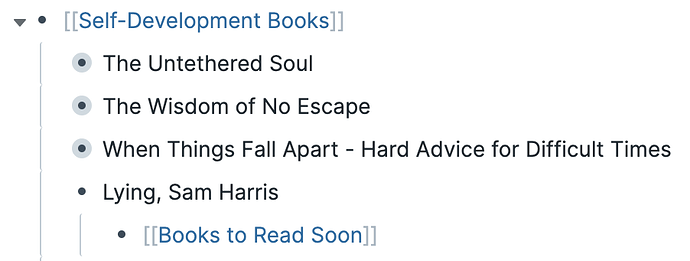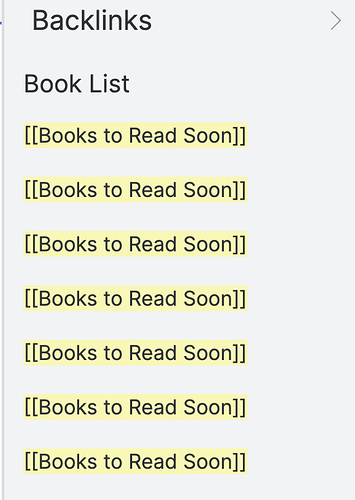I think this is a pretty important feature. It’s making it hard for me to move from Roam without it.
For example, here’s how I’m doing my book notes in Roam. I have sub-categories of books, then tag the ones I want to read, with [[Books to Read Soon]]:
Then, I can see all the books I want to read soon, along with their titles and categories, in the “Books to Read Soon” page:
In Obsidian, this just shows up as titles, which isn’t useful at all:
This makes the linking feature much less useful in Obsidian vs Roam. I think the context is pretty essential for the backlinking feature to be useful.


